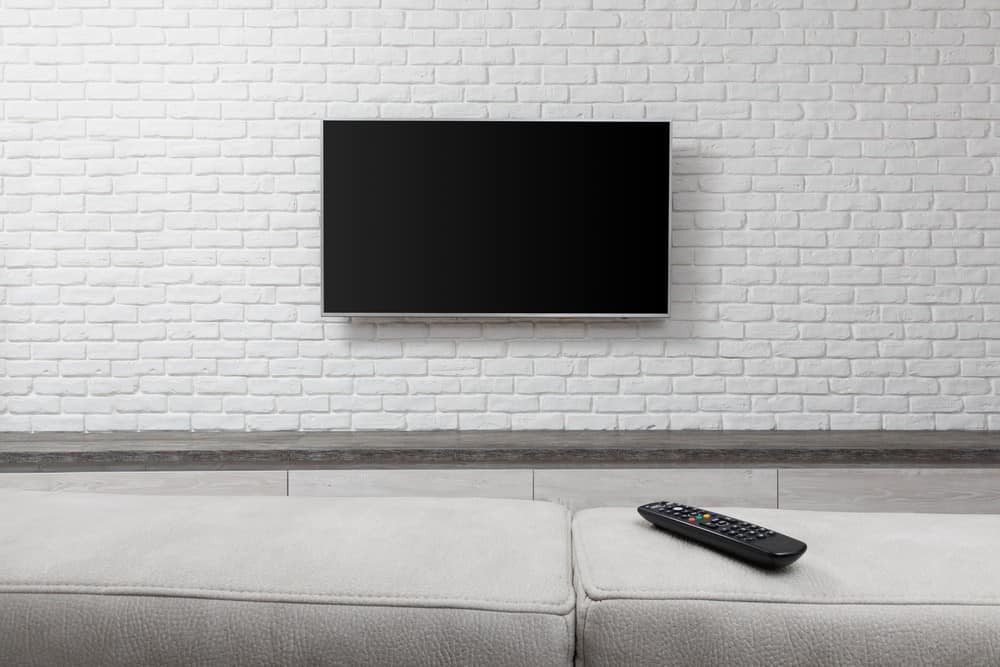When searching for the best TVs, one of the most important areas of consideration is the display. There are a few major areas of difference when it comes to matte vs glossy TV screens, and it’s important for any TV shopper to know what they are.
KEY TAKEAWAYS:
- A matte display is ideal for outdoor use or areas with uncontrolled or ambient light.
- A glossy display produces more vibrant colors and clearer images.
- Each screen has its significant advantages and disadvantages. Choosing a display will depend on your personal need and the location of the TV.
Differences Between Matte and Glossy TV Screens
The main difference between glossy screens and matte screens lies in how each reflects light. Matte surfaces have an anti-glare coating feature built-in, whereas glossy displays don’t. Matte displays, absorbing more sunlight, have duller visuals but remain visible in the presence of intense light. In a controlled environment with little natural or bright light, glare isn’t noticeable in either. It’s when they are put in direct light where the difference is noticed.
Insider Tip
Certain NanoCell TV models come with full-array local dimming. This dims parts of the backlight in darker sections to give off darker black levels.
Withstanding Reflections and Glares
If the screen in question needs to be used in direct sunlight, it would be a good idea to go with a matte screen. The reason is that a glossy surface in sunlight is nearly unusable, and a matte finish is designed for places with glares, similar to the difference between LED vs LCD TV screens. However, if the screen in question is going to be used outside, in a room with lots of natural light, or somewhere with bright lights, it may be best to go with a TV screen with a matte display.
Display, Color Saturation, and Picture Quality
It’s commonly understood that when it comes to a bright display and depth of color, glossy screens are superior to a matte finish. This is why glossy screens remain relevant even though they are hard to use when exposed to bright light. Matte displays, on the other hand, do not produce vivid color or significant color depth. For those considering a screen for gaming, it’s also essential to understand the differences between a monitor vs LED TV.
Effects on the Eyes
Because of the nature of the finish, matte screens are far better on the eyes whenever a glare is present. It’s better because a matte tv screen absorbs ambient light and doesn’t reflect into the viewer’s eyes. With glossy screens, the light bounces off of the screen and reflects into the retina. For this reason, the matte anti-glare screen is better for the eyes when comparing a glossy vs mirror-like TV
Warning
Although OLED TVs have outstanding picture quality, they tend to sell for twice the price as NanoCell TVs.
F.A.Q.S
Are matte screens better on the eyes?
The effect a screen has on the eyes depends on the location of the screen. There won’t be much of a difference if it’s in an indoor room with little ambient light and bright light. However, if there is a glare, then matte screens are better because they don’t reflect any light into the viewer’s eyes.
Matte vs Glossy: How to know which you should choose?
Choosing a screen depends mainly on where you plan on using the screen and for what. For example, many recommend glossy screens for anything that involves bright displays, such as gaming, film, and anything with vibrant color. But if you plan to use the screen outdoors or with heavy light, matte screens are superior.
How to reduce the amount of glare?
If you have a glossy screen and need to reduce the amount of glare, matte covers are available for purchase. However, this will affect the brightness of the display.
STAT: The level of brightness you should keep your screen at to keep eye strain to a minimum depends on the amount of ambient light in the room. (source)
REFERENCES:
- https://www.youtube.com/watch?v=cNoPzkhjMZk
- https://www.benq.com/en-us/knowledge-center/knowledge/matte-vs–glossy-screens–which-is-better-for you.html#:~:text=While%20glossy%20screens%20allow%20whatever,of%20the%20monitor’s%20light%20output.&text=Nor%20do%20you%20need%20to,matte%20makes%20the%20better%20option.
- https://www.youtube.com/watch?v=qh7EmbwQU-Ir
- https://www.totonstv.com/blog/choosing-tv-glossy-matte
- https://en.wikipedia.org/wiki/Matte_display

































![Best Drones Under the Cost of Ferrari in [year] 25 Best Drones Under the Cost of Ferrari in 2025](https://www.gadgetreview.dev/wp-content/uploads/image-test-3.jpg)
![Best LEDs & LCDs in [year] ([month] Reviews) 26 Best LEDs & LCDs in 2025 (December Reviews)](https://www.gadgetreview.dev/wp-content/uploads/Samsung-UN65RU7100FXZA.jpg)
![Best Streaming Services in [year] ([month] Reviews) 27 Best Streaming Services in 2025 (December Reviews)](https://www.gadgetreview.dev/wp-content/uploads/netflix-750x422-1.png)
![Best Streaming Movie and Shows in [year] ([month] Reviews) 28 Best Streaming Movie and Shows in 2025 (December Reviews)](https://www.gadgetreview.dev/wp-content/uploads/Streaming-reviews.jpg)
![Best TVs in [year] ([month] Reviews) 29 Best TVs in 2025 (December Reviews)](https://www.gadgetreview.dev/wp-content/uploads/Sony-XBR55X810C-TV-1.jpg)
![Best Shows on Amazon in [year] ([month] Reviews) 30 Best Shows on Amazon in 2025 (December Reviews)](https://www.gadgetreview.dev/wp-content/uploads/The-Boys-750x474-1.jpg)
![Best Small TVs in [year] 31 Best Small TVs in 2025](https://www.gadgetreview.dev/wp-content/uploads/best-small-tv-image.jpg)
![Best 60 Inch TVs in [year] 32 Best 60 Inch TVs in 2025](https://www.gadgetreview.dev/wp-content/uploads/best-60-inch-tv-image.jpg)
![Best 50 Inch TVs in [year] 33 Best 50 Inch TVs in 2025](https://www.gadgetreview.dev/wp-content/uploads/best-50-inch-tv-imgr.jpg)
![Most Energy Efficient TVs in [year] 34 Most Energy Efficient TVs in 2025](https://www.gadgetreview.dev/wp-content/uploads/most-energy-efficient-tv-image.jpg)
![Best TVs for Apple TV in [year] 35 Best TVs for Apple TV in 2025](https://www.gadgetreview.dev/wp-content/uploads/best-tv-for-apple-tv-image.jpg)
![Best TV Antennas in [year] ([month] Reviews) 36 Best TV Antennas in 2025 (December Reviews)](https://www.gadgetreview.dev/wp-content/uploads/best-tv-antennas-image.jpg)
![Best Mitsubishi TVs in [year] 37 Best Mitsubishi TVs in 2025](https://www.gadgetreview.dev/wp-content/uploads/best-mitsubishi-tv-image.jpg)
![Best Smart TVs in [year] ([month] Reviews) 38 Best Smart TVs in 2025 (December Reviews)](https://www.gadgetreview.dev/wp-content/uploads/best-smart-tvs-image.jpg)
![Best Conference Room TVs in [year] 39 Best Conference Room TVs in 2025](https://www.gadgetreview.dev/wp-content/uploads/best-conference-room-tv-image.jpg)
![Best Dumb TVs in [year] 40 Best Dumb TVs in 2025](https://www.gadgetreview.dev/wp-content/uploads/best-dumb-tv-image.jpg)
![Best 80 inch TVs in [year] 41 Best 80 inch TVs in 2025](https://www.gadgetreview.dev/wp-content/uploads/best-80-inch-tv-image.jpg)
![Best Shows on Hulu in [year] ([month] Reviews) 42 Best Shows on Hulu in 2025 (December Reviews)](https://www.gadgetreview.dev/wp-content/uploads/The-Handmaids-Tale-750x422-1.jpg)

















